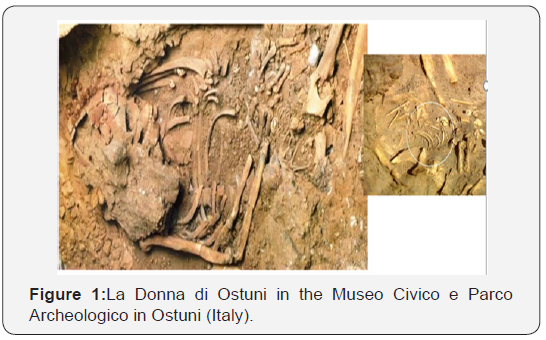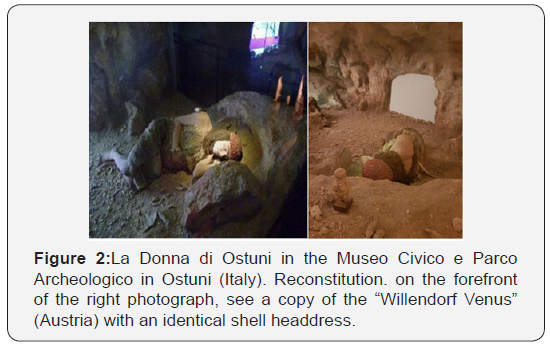Indispensable Knowledge of Eclampsia for Archaelogists and Anthropologists-Juniper Publishers
Archaeology & Anthropology- Juniper Publishers
Introduction
It is of great paradox that, besides medical
scientific journals, in general science (and even in general press such
as feminine magazines for example), very few is written on the plague of
human reproduction which is eclampsia (and pre-eclampsia). Yet, these
diseases are responsible of ap. 50,000 maternal deaths worldwide each
year (among some 135 million human pregnancies annually) [1] and
infinitely much more human neonatal deaths, notably in poor countries.
For example, in a recent study in the University
maternity of the capital of Madagascar, there were during a 8-months
follow-up 145 cases of preeclampsia of which 65 (45%) ended in eclampsia
(epileptic seizures “grand-mal”) with 7 maternal deaths of young women
(24 to 34 years of age), and among eclamptics 40 (61%) neonatal deaths
[2].
This discretion is mainly due to the fact that since a
century now [3] Eclampsia/Preeclampsia has been considered as “a
disease of theories”. As a matter of fact, to date the etiology of this
human reproductive disease (and uniquely human, there is no real natural
animal models in the other some 4,300-mammal species, including
primates or great apes) is still unclear, even if we have done great
progresses during the last century
[4]. Eclampsia/preeclampsia belong more generally to the hypertensive
disorders of pregnancy which affect some 10% human pregnancies (and
disappear after delivery), of which 3-5% of total pregnancies complicate
with preeclampsia i.e. organ involvement being explained by one central
theme ‘endothelial cell dysfunction’: kidney injuries
(Glomeruloendotheliosis, proteinuria), liver endothelial inflammation
(HELLP) and the endothelial cells involved in the blood –brain barrier
(convulsions-eclampsia, occurring in ap. 1% of human births if we let
nature do without medical interventions). There are some 6 million
preeclampsia worldwide per year, of which ap. 700,000 end in eclampsia.
To date, the only definitive treatment is delivery, and we have made
almost disappear eclampsia (convulsions) in developed countries at the
extreme cost of delivering knowingly and voluntarily often premature or
extreme premature babies who have to be cared in intensive care neonatal
units. Eclampsia occurs typically at the end of pregnancy in young
primiparous mothers and in half of cases before labour [5].
Convulsions represent a dramatic event that evidently
catch the attention to the point that it has been reported since the
beginning of writings 5,000 years ago (3,000 B.C.) In all continents. In
this frame, specifically grand-mal seizures occurring during delivery,
have been as such reported in Atharta
Veda/Sushruta (India), Wang Dui Me (China), Egyptian Papyrus
(Africa), Galen-Celsus-Hippocrates (Europe) [4,5].
Interest for Archaeologists
“La Donna di Ostuni.” In 1991, Professor Donato Coppola,
an Italian paleontologist, discovered near Ostuni (fortified
medieval city uphill between Bari and Brindisi, on the southern
Italian Adriatic coast) the skeleton of the human “most ancient
mother” ever found, as accepted by all the paleoanthropological
community with a 8 month-baby in her uterus. These skeletons
were found in the cave “sante Maria d’Agnano”, very close to
Ostuni and they are now exposed in the Museo Civico e Parco
Archeologico in Ostuni, [6] (Figure 1). The carbon-dating of these
human remains are estimated at approximately 28,000 years ago
(MAMS 12903, calBC 26461-26115, calBC 26616-25966 B.C)
[7]. The 20-year-old mother (all her teeth in good shape) and
the baby died together, the foetus of 8 months gestation (45 cm
of length) in cephalic presentation showed an extrapelvic head
therefore not yet engaged confirming that the event occurred
before labour. We proposed recently that the cause of these
maternal –fetal deaths may indeed be due to eclamptic fits [8].
There are apparently 2 other locations where foetuses were also
found inside their mother’s pelves: Nazlet Khater (Upper Egypt)
and possibly Nataruk (Turkana Lake, Kenya).

considered as an evident collective effort for a complex ritual
operation, a kind of divinisation of a woman who died during
pregnancy [7,9]. The mother was buried lying on her left side, in
a crouched position, with her right forearm obliquely placed on
her abdomen, her face looking toward the east (Figure 2). A very
interesting detail is that this young mother wore a 600-shell
headdress (Figures 1 & 2) exactly identical to that found on
the “Willendorf Venus” (dated 22,000-24,000 years B.C.) In
Austria en 1908, 1000 km up north of the area of Ostuni. Why
our ancestors have felt the “necessity” for pregnant women
to wear such a headdress? For sure, mankind had since the
origin noticed that there were a “Damocles sword” upon every
pregnant women, and especially young primiparae, namely that
at the end of pregnancy, she could have convulsions and possibly
die near delivery. This has certainly terrorized our ancestors,
and certainly also, seizures were recognised to start from the
head (muscle contractions, visual disturbances, unusual head
or eye movements, mouth alteration, loss of consciousness)
therefore we may propose that the headdresses, or necklace
amulets, that pregnant women wore were probably protective
artefacts against these ominous events like death at birth and
convulsions.

Joseph Szombathy who found the Willendorf statuette
proposed the term of “Venus”, and this name became the standard
for all these feminine artefacts [10-12]. Since 1864, some 250
paleolitical “Venuses” have been found all around the Eurasiatic
area, some of them wearing also headdresses, like “la Dame de
Brassempouy”, “Laussel” in the south of France, the “Venus of
Kostienki” and “Avdeedo” in Russia and Siberia, possibly also
the “Venus of Parabita” [10,11]. Many of these statuettes were
very small and light probably used as necklace amulets. All
the feminine figurines might not have been “Venuses” (sort of
suggestive sexual artefacts) but rather “Maternas”, protective
devices during human pregnancies, also against the terrible,
unpredictable and frightening convulsions.
Interest for (Paleo) Anthropologists
It is well established now that a major trigger of
preeclampsia (occurring only during the last trimester of the
human pregnancy) is linked with a defective placentation at
the beginning of pregnancy. As a matter of fact, humans have
a natural very aggressive trophoblastic invasion (1/3 of the
maternal uterine wall, including the muscle-myometrium). A
defective placentation during the first trimester of pregnancy
may lead to eclampsia/preeclampsia. Among primates, the
haemochorial placentation is linked with the size of the fetal
brain [12,13]. Palaeoanthropologists may refer to the debates
on the subject concerning eclampsia/preeclampsia [4,14-16]
on the different species of hominids and humans. We may then
speculate that eclampsia should have existed in Homo erectus,
Homo neanderthalensis as well as in Homo sapiens, and probably
not in Homo or hominids with lighter fetal brains.
For anthropologists/ethnologists, there is a poorly explored
continent which is the knowledge and/or interpretation of
eclampsia in different human communities, especially in human groups having still not access to effective modern medical and
obstetrical cares (unfortunately, to date, still a majority of
humans). Studies have been made in Nigeria [17], Mozambique
[18], Pakistan [19] and India [20], but it should have a lot to do
further in the future: asking the simple question “what is the
cause or meaning of convulsions during pregnancy in young
women” to women themselves, but moreover to matrons,
healers, community health workers, shamans etc… Tales, myths,
different allegories or interpretation on the subject may be a
millennial culture which could make us approach how our far
ancestor could themselves explain this event. Sending students
or post-Doctoral fellows in different parts of the world should
probably reveal many surprises for the different interpretations
of these fatal convulsions in young women.
Conclusion
Archaeologists and anthropologists must be aware of the
existence of this spectacular and frightening complication of
human reproduction which is eclampsia [21]. Any woman, even
illiterate, has obligatorily heard about it (as it could happen to
her). Having this cultural background may help to understand/
interpret some clues (paleolithical statuettes, parietal arts).



Comments
Post a Comment